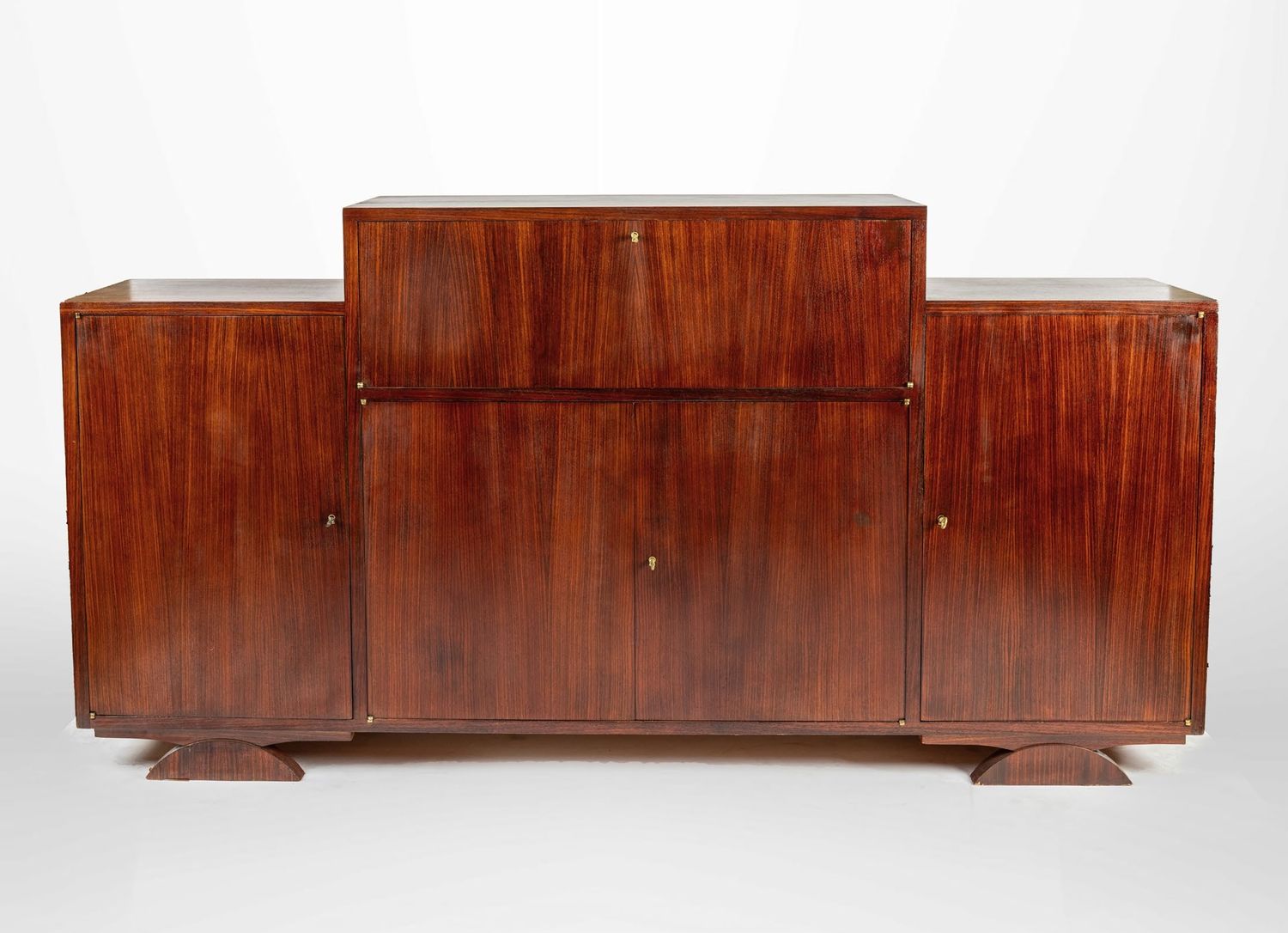Sideboard
Eugène Printz

Cubic boxes in rosewood veneer opening in the central part with a flap and in the lower part with two doors revealing a storage space on the sides, two doors reveal an interior divided into shelves and stacked drawers. It rests at the front on two feet with a geometric halfmoon cubist shape.
Details
Material
Dimensions
Place and Year
Literature
Eugène Printz
Printz was a distinguished French cabinetmaker and designer, renowned for his refined and inventive approach to Art Deco furniture and interior decoration. Printz’s designs combined exquisite craftsmanship with simple yet luxurious forms, marking him as a leading figure in twentieth-century decorative arts. Embracing innovative materials such as palmwood veneer, exotic woods, and gilded bronze.
Printz elevated furniture to objects of art, often collaborating with noted artisans like Jean Dunand for decorative lacquer panels. Trained in his father's Paris workshop, Printz began by replicating antique pieces; he quickly transitioned to modern design, debuting his own work at the International Exposition of Modern Industrial and Decorative Arts in 1925 alongside Pierre Chareau. His rise was propelled by commissions from the French Mobilier National, the City of Paris, and the haute-couture offices of Jeanne Lanvin. Printz’s clientele extended internationally, designing for patrons in the UK, North America, Belgium, and Mexico.
During the 1930s, Printz’s creations furnished the boudoir of the Princess de la Tour d’Auvergne at the Château de Grosbois and showcased his mastery at major Parisian salons and universal exhibitions, where his understanding of lighting and spatial arrangement stood out. His work for public and private spaces, as well as set designs for the Théâtre Athénée in Paris, solidified his reputation among the social elite.


